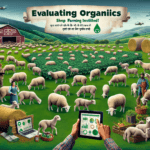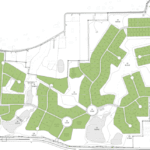Main Points In Hindi (मुख्य बातें – हिंदी में)
यहाँ दिए गए लेख के मुख्य बिंदु इस प्रकार हैं:
-
कमोडिटी बाजार का महत्व: पिछले 20-25 वर्षों में कमोडिटी बाजार नीति निर्माताओं, निवेशकों और अन्य हितधारकों के बीच महत्वपूर्ण ध्यान केंद्रित कर चुके हैं। यह अब इक्विटी, बॉंड और विदेशी मुद्रा के साथ एक विशिष्ट परिसंपत्ति वर्ग बन गया है, जिसमें निवेशकों की रुचि भी बढ़ी है।
-
कमोडिटी की विविधता: कमोडिटी को मुख्य रूप से चार श्रेणियों में वर्गीकृत किया जा सकता है: ऊर्जा (जैसे कच्चा तेल, प्राकृतिक गैस), धातु (जैसे सोना, तांबा), कृषि (जैसे अनाज, कपास) और पॉलिमर। ये उत्पाद अक्सर कच्चे माल के रूप में उपयोग किए जाते हैं और इनका थोक में कारोबार होता है।
-
भारत में कमोडिटी का भविष्य: भारत आगामी 25-30 वर्षों में वस्तु प्रधान आर्थिक वृद्धि की ओर अग्रसर है, जिसमें कृषि, ऊर्जा, औद्योगिक धातुओं के उत्पादन और व्यापार में वृद्धि की संभावना है। बढ़ती जनसंख्या और आय स्तर के कारण कमोडिटी की खपत में वृद्धि होगी।
-
कमोडिटी बाजार की अस्थिरता: कमोडिटी बाजार कई कारकों जैसे आर्थिक विकास, भू-राजनीति, मौद्रिक नीति आदि से प्रभावित होते हैं, जिससे इनके निवेश में सावधानी बरतने की आवश्यकता है। निवेशकों को बाजार की गतिशीलता को समझना और संबंधित जोखिमों का प्रबंधन करना होगा।
- कमोडिटी डेरिवेटिव्स और जोखिम प्रबंधन: मूल्य जोखिम के प्रबंधन के लिए कमोडिटी डेरिवेटिव अनुबंधों का उपयोग किया जाता है। बाजार का विकास सुनिश्चित करने के लिए भारतीय प्रतिभूति और विनिमय बोर्ड (सेबी) द्वारा कदम उठाए गए हैं, जिनमें अधिक उत्पादों और प्रतिभागियों को शामिल करना शामिल है।
Main Points In English(मुख्य बातें – अंग्रेज़ी में)
Here are the main points from the article:


-
Growth of Commodity Markets: Over the past 20-25 years, commodity markets have gained significant attention from policymakers, investors, and stakeholders, becoming a distinct asset class alongside equities, bonds, and foreign currencies.
-
Nature of Commodities: Commodities are economically valuable materials derived from the Earth, typically produced and traded in bulk. They can be categorized into four main groups: energy, metals, agriculture, and polymers, with energy products like crude oil and natural gas being prime examples.
-
Investment Trends: Historically, commodities like gold and crude oil have provided attractive returns, often outperforming traditional investments like equities. As India experiences economic growth, there is an anticipated increase in demand for various commodities due to rising income and population.
-
Economic Impact and Sectors: The article emphasizes that India’s economic growth will increasingly rely on commodities, particularly in sectors such as food, textiles, energy, and infrastructure. The demand for commodities is expected to grow significantly as these sectors expand.
- Market Volatility and Risk Management: Commodity markets are inherently volatile and influenced by various factors, including economic conditions and geopolitical events. Effective risk management strategies, such as using commodity derivatives for hedging price risks, are essential for market participants to navigate this volatility effectively. The Securities and Exchange Board of India (SEBI) plays a crucial role in regulating and fostering the growth of the commodity derivatives market.
Complete News In Hindi(पूरी खबर – हिंदी में)
हालाँकि कमोडिटी कई शताब्दियों या यहाँ तक कि सहस्राब्दियों से हमारे साथ हैं, पिछले 20-25 वर्षों में कमोडिटी बाजारों ने नीति निर्माताओं, निवेशकों और अन्य हितधारकों का बहुत ध्यान आकर्षित किया है।
कमोडिटीज अब इक्विटी, बॉन्ड, विदेशी मुद्रा इत्यादि की कंपनी में एक विशिष्ट परिसंपत्ति वर्ग बन गई हैं। कमोडिटी में निवेशकों की दिलचस्पी बढ़ रही है। अक्सर, वस्तुओं ने इक्विटी जैसी पारंपरिक परिसंपत्तियों से बेहतर प्रदर्शन किया है और निवेशकों को आकर्षक रिटर्न दिया है। कोई आश्चर्य नहीं, वित्तीय निवेशक कमोडिटी बाजार में सक्रिय हैं।
वस्तुएँ क्या हैं? वे आर्थिक मूल्य वाले सामान हैं और पृथ्वी के उत्पाद हैं। थोक में उत्पादित और थोक में कारोबार की जाने वाली वस्तुएं अक्सर उपभोज्य उत्पादों में आगे की प्रक्रिया के लिए कच्चा माल होती हैं।
वस्तुओं को मोटे तौर पर ऊर्जा, धातु, कृषि और पॉलिमर नामक चार बाल्टियों में रखा जा सकता है। ऊर्जा उत्पादों में कच्चा तेल, प्राकृतिक गैस, कोयला आदि शामिल हैं। धातुओं को औद्योगिक (स्टील, लौह अयस्क), आधार (मुख्य रूप से एल्यूमीनियम, तांबा, निकल, जस्ता आदि) और कीमती (सोना, चांदी, प्लैटिनम, पैलेडियम) में वर्गीकृत किया जा सकता है। कृषि वस्तुओं में मुख्य रूप से अनाज, कपास, चीनी, तिलहन, कॉफी और कई अन्य चीजें शामिल होंगी।
जबकि इक्विटी को आम तौर पर ‘निवेश परिसंपत्ति वर्ग’ के रूप में देखा जाता है, वस्तुओं को ‘उपभोग परिसंपत्ति वर्ग’ के रूप में देखा जाता है।
सोना और कच्चा तेल निवेश परिसंपत्तियों के रूप में वस्तुओं के दो उत्कृष्ट उदाहरण हैं जिन्होंने निवेशकों को अच्छा रिटर्न दिया है। अमेरिका में। कमोडिटी बाजार इक्विटी बाजार से बड़े हैं। पिछले 30 वर्षों में चीन की चमत्कारी विकास गाथा में वस्तुओं – ऊर्जा, धातु, कृषि – ने प्रमुख भूमिका निभाई है।
भारत अब विस्तारवादी चरण में है। अगले 25-30 वर्षों में हमारे देश की आर्थिक वृद्धि काफी हद तक वस्तु आधारित होगी और हमारी वृद्धि वस्तु प्रधान होगी।
बढ़ती आय, जनसंख्या विस्तार और मौजूदा कम प्रति व्यक्ति उपलब्धता हमारे देश में कमोडिटी खपत को बढ़ाती है। इसलिए, भोजन, फाइबर, धातु और ऊर्जा वस्तुओं का व्यापार कई गुना बढ़ने वाला है।
भारत कृषि, ऊर्जा उत्पादों और विभिन्न धातुओं को कवर करने वाली कई वस्तुओं का एक प्रमुख उत्पादक, प्रमुख प्रोसेसर, प्रमुख उपभोक्ता और प्रमुख निर्यातक या आयातक होगा।
इस लेखक का मानना है कि भारतीय अर्थव्यवस्था के आठ क्षेत्र हैं जो आने वाले दशकों में तेजी से विकास के लिए तैयार हैं। ये भोजन को कवर करते हैं; कपड़ा और परिधान; आवास और बुनियादी ढाँचा; ऊर्जा; गतिशीलता; स्वास्थ्य देखभाल; शिक्षा; और अवकाश/मनोरंजन।
अंतिम तीन – स्वास्थ्य देखभाल, शिक्षा और अवकाश/मनोरंजन – सेवाएँ हैं। पहले पांच – खाद्य, कपड़ा, निर्माण, ऊर्जा, गतिशीलता – वास्तविक अर्थव्यवस्था का प्रतिनिधित्व करते हैं और अत्यधिक वस्तु गहन हैं। उदाहरण के लिए, किसी भी बुनियादी ढांचे या निर्माण परियोजना में, स्टील और सीमेंट जैसी वस्तुएं एक प्रमुख लागत तत्व का प्रतिनिधित्व करती हैं।
गतिशीलता में रेलवे, सड़क मार्ग, वायुमार्ग और समुद्री मार्ग शामिल हैं, जो गतिशीलता बुनियादी ढांचे और परिवहन वाहनों के निर्माण के मामले में अत्यधिक कमोडिटी गहन हैं। इसी तरह, ऊर्जा की खपत आर्थिक विकास को बढ़ावा देती है। किसी भी रूप में ऊर्जा की खपत – चाहे जीवाश्म ईंधन हो या नवीकरणीय – आर्थिक विकास का अभिन्न अंग है। ऊर्जा परिवर्तन के हमारे प्रयास भी वस्तु-प्रधान या अधिक विशेष रूप से धातु-प्रधान होंगे।
उदाहरण के लिए, सौर ऊर्जा अवसंरचना (सौर पैनल) और चार्जिंग स्टेशनों सहित इलेक्ट्रिक वाहन बड़ी मात्रा में धातुओं का उपयोग करेंगे। इसी तरह, कपड़ा और कपड़ा उद्योग को कपास, ऊन, रेशम और सिंथेटिक फाइबर जैसे फाइबर की आवश्यकता होती है।
यह समझना जरूरी है कि कमोडिटी बाजार अपने स्वभाव से ही अस्थिर होते हैं। आर्थिक विकास, भू-राजनीति, मौद्रिक नीति, मुद्रा, मौसम और फंड सहित कई कारक इन बाजारों को प्रभावित करते हैं। इसलिए वस्तुओं में निवेश के लिए यह मांग होगी कि निवेशक बाजार चालकों से जुड़ा रहे और बाजार की गतिशीलता को समझे।
हमारे देश में, व्यापार सुधारों ने आंतरिक और बाह्य दोनों तरह से मुक्त व्यापार वातावरण बनाया है। परिणामस्वरूप, भारतीय बाजार धीरे-धीरे व्यापार मार्ग और निवेश मार्ग के माध्यम से वैश्विक बाजार के साथ एकीकृत हो रहा है। इसी समय, वैश्विक मूल्य अस्थिरता भारतीय बाजार में प्रसारित होती है। इसलिए, जोखिम की धारणा बढ़ गई है। मूल्य जोखिम का प्रबंधन करने के लिए, हितधारकों को घरेलू बाजार के बुनियादी सिद्धांतों से परे जाना होगा और बाजार के बारे में वैश्विक दृष्टिकोण रखना होगा।
बाजार सहभागियों के लिए जोखिम कम करना सबसे महत्वपूर्ण है। सभी जोखिम (उत्पादन, गुणवत्ता, प्रक्रिया, व्यापार या नीति से संबंधित जोखिम) कीमत में परिवर्तित होते हैं। इसलिए, मूल्य जोखिम प्रबंधन अंतर्निहित जोखिमों के प्रबंधन के लगभग बराबर है।
उत्पादकों, प्रोसेसरों और उपभोक्ताओं के लिए, वायदा विनिमय में मूल्य जोखिम की हेजिंग मार्जिन की सुरक्षा का सबसे सुरक्षित तरीका प्रदान करती है। कमोडिटी मूल्य जोखिम का प्रबंधन करने के लिए, बाजार सहभागी कमोडिटी डेरिवेटिव अनुबंधों का उपयोग करते हैं। डेरिवेटिव बाजार दो प्राथमिक कार्य करता है – बाजार सहभागियों के लिए मूल्य खोज और मूल्य जोखिम प्रबंधन।
भारतीय प्रतिभूति और विनिमय बोर्ड (सेबी) कमोडिटी डेरिवेटिव बाजार को नियंत्रित करता है। डेरिवेटिव बाजार को गहरा और व्यापक बनाने के लिए, सेबी ने अधिक प्रतिभागियों और अधिक उत्पादों को अनुमति देकर कई पहल की हैं। म्यूचुअल फंड और वैकल्पिक निवेश फंड श्रेणी III (एआईएफ-III) को निवेश करने की अनुमति है। विकल्प ट्रेडिंग और इंडेक्स ट्रेडिंग की अनुमति है। तार्किक अगला कदम बैंकों को उनकी जोखिम शमन योजना के हिस्से के रूप में कमोडिटी डेरिवेटिव्स का व्यापार करने की अनुमति देना होगा।
जी चन्द्रशेखर एक अर्थशास्त्री, वरिष्ठ पत्रकार और नीति टिप्पणीकार हैं, और सरकार के लिए नीतिगत इनपुट प्रदान करते हैं। विचार व्यक्तिगत हैं
Complete News In English(पूरी खबर – अंग्रेज़ी में)
Although commodities have been around for centuries, in the last 20-25 years, commodity markets have gained significant attention from policymakers, investors, and other stakeholders.
Commodities have become a distinct asset class alongside equities, bonds, and foreign currencies. There is an increasing interest in commodities among investors, as these assets often outperform traditional investments like stocks, offering attractive returns. This trend has led to greater activity of financial investors in the commodity markets.
What are commodities? They are goods with economic value produced by the Earth. Commodities are typically produced in bulk and traded in large quantities, often serving as raw materials for further processing into consumable products.
Commodities can be broadly categorized into four groups: energy, metals, agriculture, and polymers. Energy products include crude oil, natural gas, and coal. Metals can be classified into industrial (like steel and iron ore), base (mainly aluminum, copper, nickel, and zinc), and precious metals (such as gold, silver, platinum, and palladium). Agricultural commodities primarily include grains, cotton, sugar, edible oils, coffee, and more.
While equities are generally viewed as an ‘investment asset class’, commodities are seen as a ‘consumption asset class’.
Gold and crude oil are two prime examples of commodities that have provided good returns to investors, particularly in the United States. The commodity market is larger than the equity market. Over the past 30 years, commodities—especially energy, metals, and agriculture—have played a significant role in China’s impressive economic growth.
India is currently in an expansionary phase. In the next 25-30 years, our country’s economic growth is expected to be largely commodity-based. Consumption of commodities will increase due to rising incomes, population growth, and current low per capita availability. Therefore, trade in food, fibers, metals, and energy commodities is set to multiply.
India is set to become a major producer, processor, consumer, and exporter or importer of many commodities, covering agricultural products, energy, and various metals.
This author believes there are eight sectors in the Indian economy that are poised for rapid growth in the coming decades. These include food; textiles and apparel; housing and infrastructure; energy; mobility; healthcare; education; and leisure/recreation.
The last three sectors—healthcare, education, and leisure/recreation—are service sectors. The first five—food, textiles, construction, energy, and mobility—represent the real economy and are highly commodity-intensive. For instance, in any infrastructure or construction project, commodities like steel and cement represent a significant cost.
Mobility includes railways, roadways, airways, and waterways, all of which are highly commodity-intensive in the construction of mobility infrastructure and transport vehicles. Similarly, energy consumption boosts economic growth. Regardless of the form of energy—whether fossil fuels or renewable sources—energy consumption is integral to economic development. Our efforts towards energy transition will also be commodity-centric, particularly in metals.
For example, solar energy infrastructure (like solar panels) and charging stations for electric vehicles will require significant amounts of metals. Likewise, the textile and apparel industry necessitates fibers such as cotton, wool, silk, and synthetic materials.
It’s important to understand that commodity markets are inherently volatile due to several factors, including economic growth, geopolitics, monetary policy, currency fluctuations, weather, and funding. Thus, investors need to stay informed about market drivers and understand market dynamics when investing in commodities.
In our country, trade reforms have created a free trade environment both internally and externally. As a result, the Indian market is gradually integrating with the global market through trade and investment channels. At the same time, global price volatility is affecting the Indian market, leading to an increased perception of risk. To manage price risk, stakeholders need to look beyond domestic market fundamentals and adopt a global perspective.
It is crucial for market participants to minimize risk. All risks—related to production, quality, processes, trade, or policies—eventually translate into price changes. Therefore, managing price risk is almost equivalent to managing underlying risks.
For producers, processors, and consumers, hedging price risks in the futures exchange is the safest way to protect margins. To manage commodity price risk, market participants use commodity derivatives contracts. The derivatives market serves two primary functions: price discovery for market participants and price risk management.
The Securities and Exchange Board of India (SEBI) regulates the commodity derivatives market. To deepen and widen this market, SEBI has taken several initiatives by allowing more participants and products. Mutual funds and Alternative Investment Fund (AIF) category III are permitted to invest. Options trading and index trading have been allowed. A logical next step would be to allow banks to trade commodity derivatives as part of their risk mitigation strategies.
G. Chandrashekhar is an economist, senior journalist, and policy commentator, providing policy inputs to the government. The views expressed are personal.






